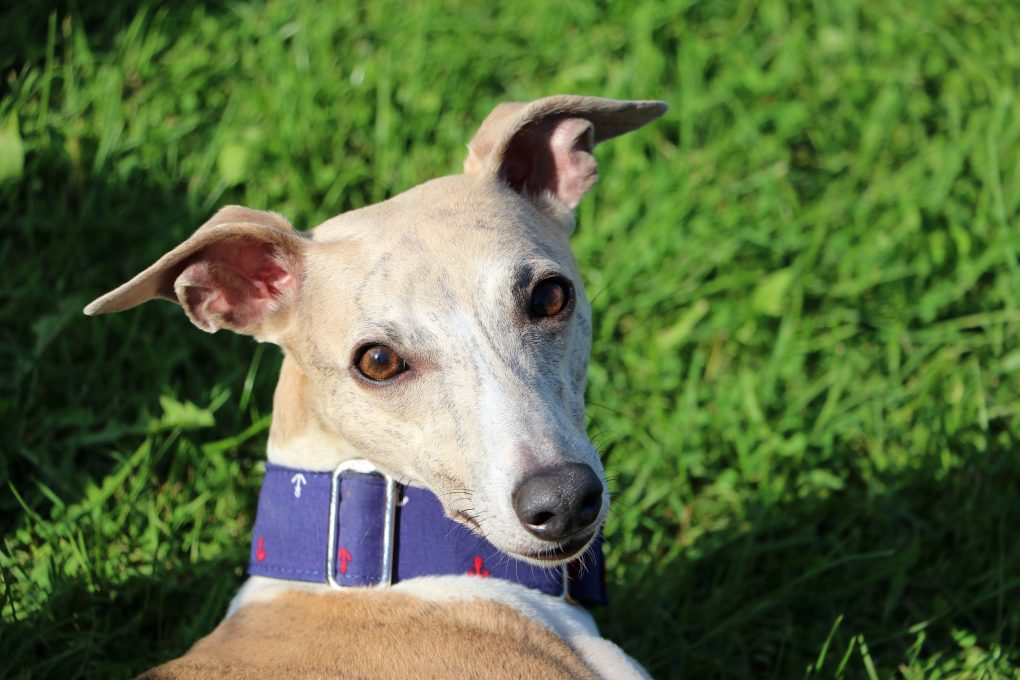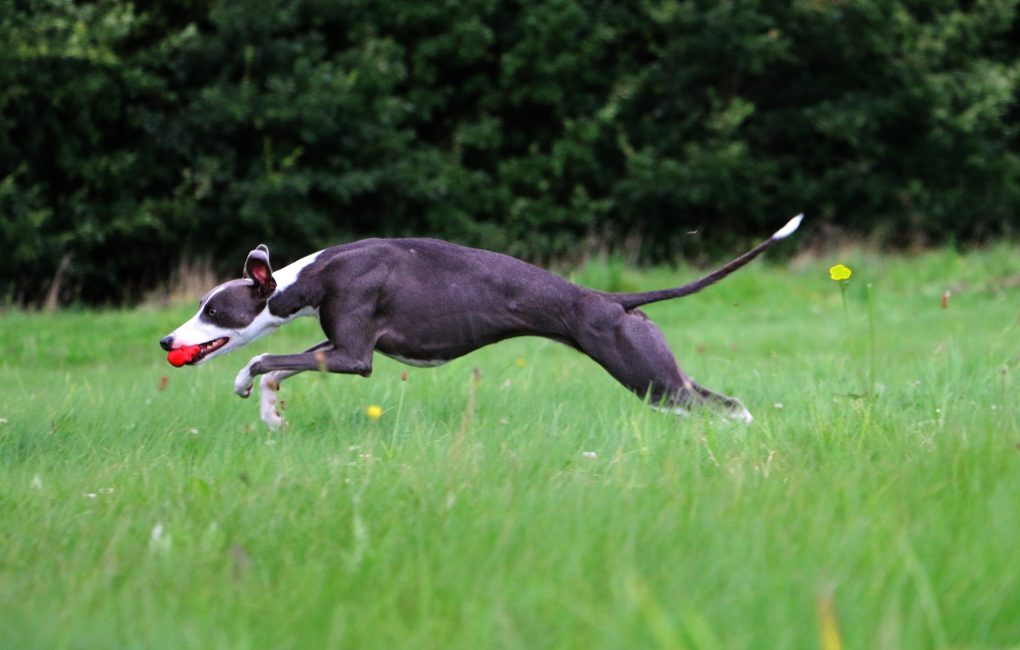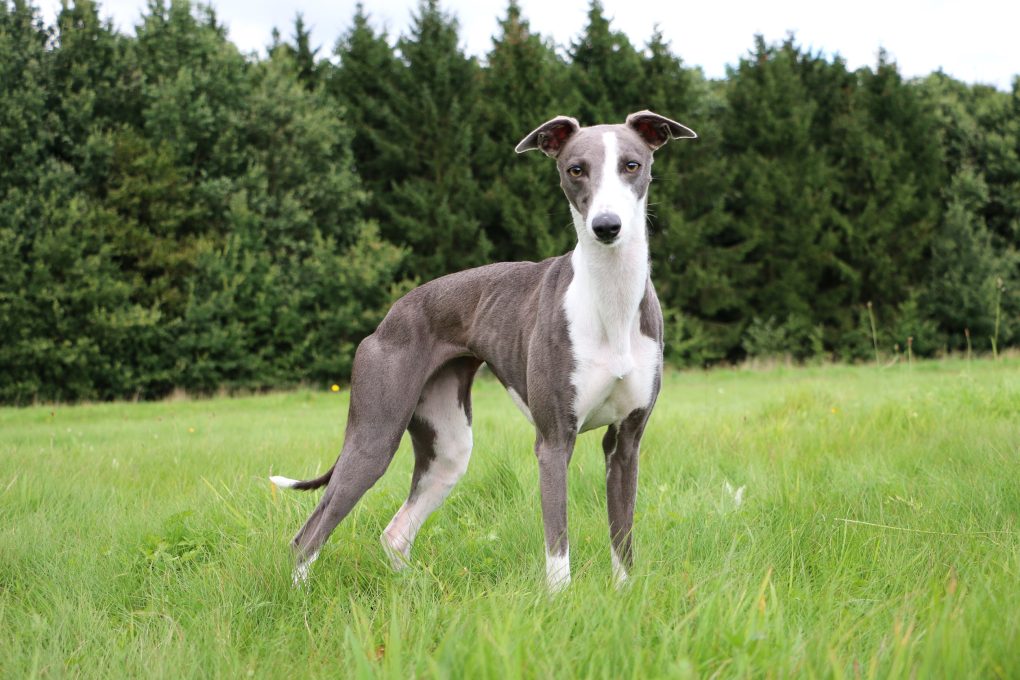Is Whippet Faster Than a Greyhound: A Comparison of the Speeds of These Breeds
Whippets are faster than Greyhounds because Greyhounds have a longer stride and larger body size that allows them to cover more ground with each stride, making them the fastest breed of dog and can reach speeds of up to 45 mph. Whippets, on the other hand, can reach speeds of up to 35 mph, which is still very fast and makes them one of the fastest dog breeds in the world.
While Greyhounds are faster than Whippets, both breeds are incredibly agile and have impressive speed and stamina. They are both popular choices for racing and hunting and have similar temperaments and personalities.


Table of Contents
A Comparison of Speed: Whippet vs. Greyhound
How Fast Is a Whippet?
Whippets have incredible speed, their hind legs propel them forward, and they almost spring across the land. These dogs are known to top the speed charts at 45 miles per hound. Whippets are agile enough to jump high into the air to catch prey or avoid danger.
As mentioned, their average running speed is around 35 miles per hour. However, it’s important to note that the speed of a Whippet can vary based on several factors, such as the individual dog’s age, size, overall health, and the terrain and weather conditions.
In addition, while Whippets are known for their impressive speed, they are not built for long-distance running or sustained endurance activities. Instead, they are sprinters, and their speed and agility are best suited for short bursts of activity, such as racing or hunting.
It’s also important to remember that while Whippets can run very fast, it’s essential to follow all safety guidelines, such as training for recall and choosing a safe location when allowing them to run off-leash, as they can quickly reach high speeds and can be at risk of injury if they are not adequately supervised.
How Fast Is a Greyhound?
As previously stated, Greyhounds are the fastest dog breed and have impressive speed and agility. The average running speed of a Greyhound is around 45 miles per hour. Like Whippets, the speed of a Greyhound can vary based on factors such as age, size, health, and the terrain and weather conditions. However, in general, Greyhounds are faster and are often used for racing and other high-speed activities such as:
- Racing: Greyhounds are well known for their racing abilities and are a popular breed for racing events. These events typically involve Greyhounds chasing a mechanical lure on a track or in an open field.
- Lure coursing: Lure coursing is another high-speed activity that Greyhounds are well-suited for. This activity involves a Greyhound chasing a mechanical lure through obstacles and terrain features.
- Agility competitions: Greyhounds are also well-suited for agility competitions, which involve obstacles and challenges that the dog must navigate as quickly and efficiently as possible. Greyhounds have excellent speed and agility, which can help them excel in this type of competition.
In addition to these activities, Greyhounds may be used for hunting or other activities requiring speed and agility. However, it’s important to remember that, like Whippets, Greyhounds are sprinters not built for sustained endurance activities or long-distance running. Providing them with plenty of rest and recovery after high-speed activities is essential to avoid overexertion or injury.
Why a Greyhound Is Faster Than a Whippet


Aerodynamics
Aerodynamics is essential to a dog’s ability to run at high speeds. In the case of Greyhounds, their more streamlined body shape and longer legs compared to Whippets allow them to move more efficiently and reduce air resistance, which helps them run faster.
Greyhounds have a more bottomless chest and narrower waist than Whippets, which helps to reduce drag and air resistance as they run. This body shape allows air to flow more smoothly over their body, reducing turbulence and drag and making it easier for them to maintain their speed over longer distances.
In addition, the length of a dog’s legs can also affect its aerodynamics. Greyhounds have longer legs than Whippets, which allows them to take longer strides and cover more ground with each stride. This can help reduce the time they spend in the air, reducing air resistance and allowing them to move more efficiently.
Overall, the more streamlined body shape and long legs of Greyhounds compared to Whippets help to improve their aerodynamics and make them faster runners. This, combined with their specialized breeding for speed and performance, makes Greyhounds one of the fastest dog breeds in the world.
Selective Breeding
Selective breeding is the process of choosing certain dogs with desirable traits to mate with each other to produce offspring with those same desirable traits. Over many generations, Greyhounds have been selectively bred for their speed, agility, and other physical and behavioral traits that make them successful hunting and racing dogs.
This breeding has resulted in a highly specialized breed for running at high speeds. For example, breeders have selected Greyhounds with longer legs and a more streamlined body shape, which allows them to move more efficiently and reduce air resistance, making them faster runners. They have also selected dogs with cardiovascular solid, respiratory systems, and strong muscles and bones.
In contrast, Whippets were initially bred for hunting small game, and while they are also fast runners, they have yet to be selectively bred to the same degree as Greyhounds for speed and performance.
Stride Frequency
Stride frequency refers to the number of strides a dog takes per unit of time, usually measured in strides per second. A higher stride frequency can help a dog move more quickly and efficiently, contributing to its speed.
Greyhounds typically have a longer stride length than Whippets, which allows them to cover more ground with each stride, but despite their longer stride, Greyhounds also have a higher stride frequency than Whippets, which means they take more strides per second.
This higher stride frequency can be attributed to several factors, including their larger size and more muscular build and their specialized breeding for speed and performance. Their longer legs also play a role, as they can take more steps to cover the same distance as a smaller dog.
Heart Size
Heart size is essential to a dog’s ability to run at high speeds. For example, a larger heart can pump more blood to the muscles, giving them more oxygen and nutrients to function correctly. This can allow a dog to run faster and for more extended periods.


Greyhounds have a relatively larger heart compared to their body size than Whippets do. This is partly due to their specialized breeding for speed and performance, as breeders have selected dogs with cardiovascular solid and respiratory systems over many generations.
In addition to having an enormous heart, Greyhounds also have a higher red blood cell count than many other dog breeds, which helps to transport oxygen more efficiently throughout their body during exercise. They also have a relatively lower resting heart rate, which can help them conserve energy when not exercising, allowing them to sustain high speeds for extended periods.
